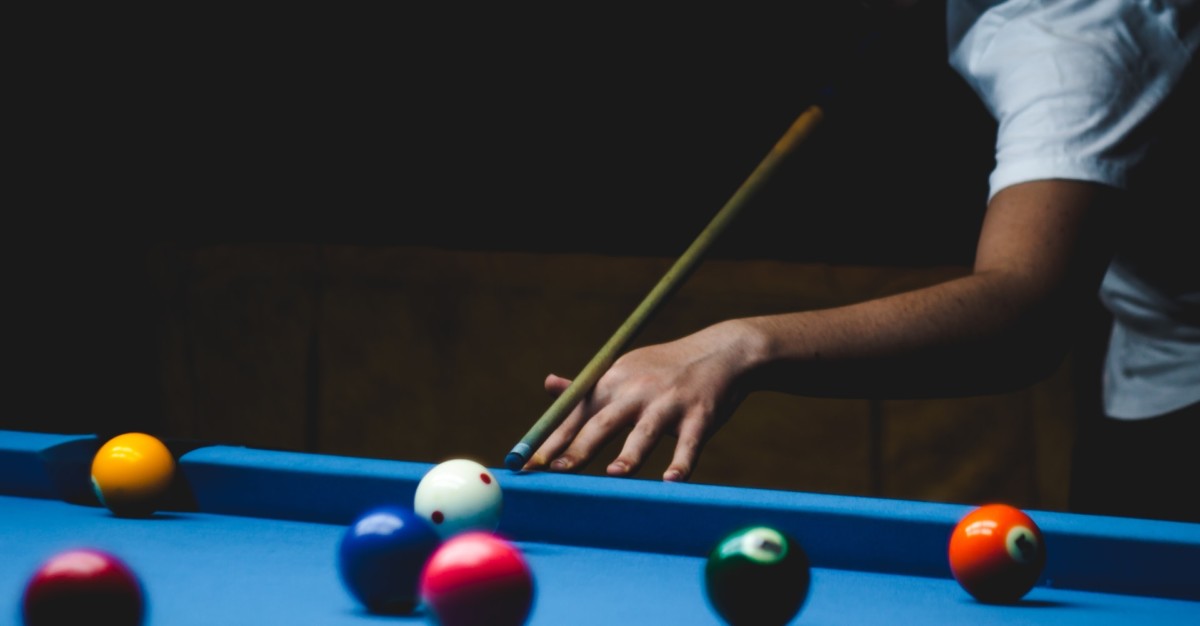A lot of new players who play pool or billiards will hold the pool stick (or cue) incorrectly. This is an easy mistake to make because it is not obvious to newcomers.
Holding a pool stick correctly is very important because it can help you with accuracy and consistency. In the opposite effect, a poor hand position/hand bridge or stroke can easily ruin players shot making skills.
Holding a pool stick correctly can be broken down into two parts. Your GRIP and HAND BRIDGE. There is a BONUS topic at the end where we cover the Stroke.
Scenario for Right-Handed people (Switch around if you are a Lefty)
The position of Hands:
-
- Right hand goes on the pool butt (bottom half of a pool stick) where you GRIP
- Left hand goes on the table where your hand creates a BRIDGE for the pool stick
If you mess any of these parts up, it will absolutely mess up your shooting. You may find yourself missing an easy shot you’ve made a thousand times by hitting the ball too hard due to your grip.
GRIP
Get a Grip on things!
If you are right-handed, you will want to place your right hand on the heavy bottom part of a pool cue (the pool butt). You don’t want it too far near the bottom rubber piece but at least a few inches away from it.
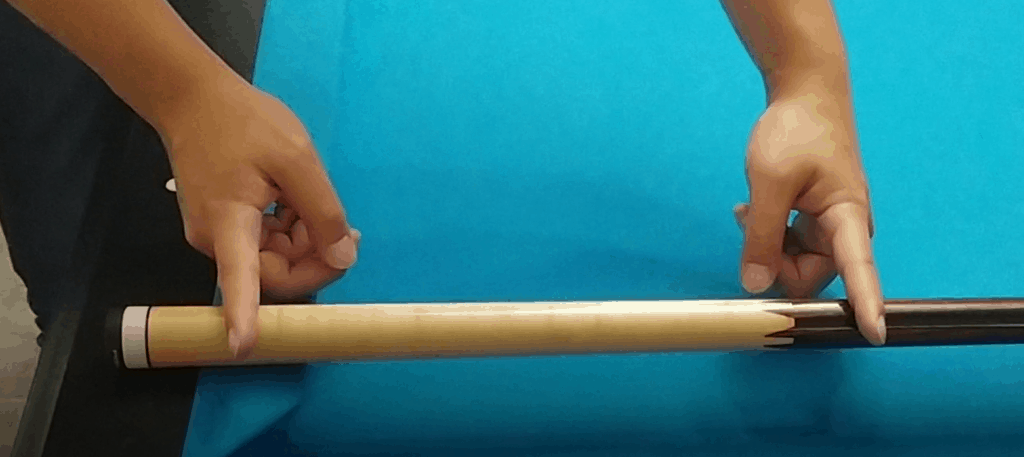
There is no PRECISE SPOT for your hand position on the stick but this is a good range to be in. Ultimately it will depend on the player’s preference.
Pool is an extremely energy focused game where players must exert the perfect amount of energy to achieve their desired results. This means you cannot have an extremely hard grip because you lose the finesse aspect of it. The best grip you can have is a very loose one. You are trying to have just enough of a grip on your fingers to where you can swing the pool stick back and forth.
The wrong way to grip:
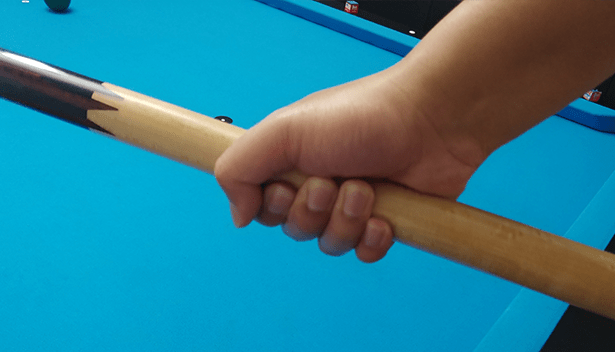
For the love of the pool gods, please do not use a “DEATH GRIP”. A Death Grip or Tight Grip on the cue will usually result in an inaccurate shot. There is no need to squeeze all 5 fingers and your palm on the pool butt during the entire shot. It’s unnecessary to do so and a very bad habit to pick up on.
Exception:
-
- If you can keep the pool stick in line while shooting
- Specific shots may require it:
- Nip Draw shot (to not foul)
Preferred Loose Grip:
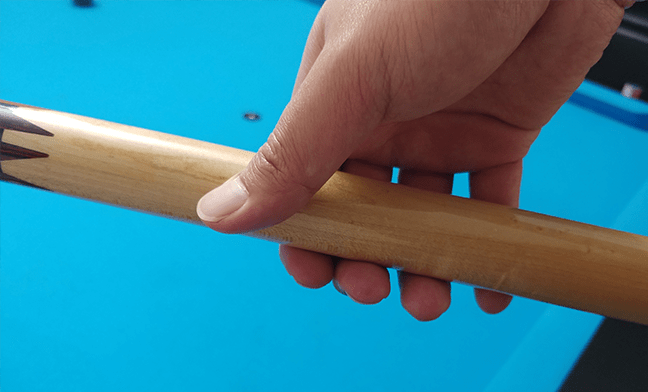
Having a finesse playing style and grip is the best approach. A loose grip will allow you to let the pool stick travel naturally without swerving in different directions. It can help prevent what I call the “chicken wing” where you grip and stroke goes sideways. Trust me, everything will work better if you have a loose grip.
My personal grip is where only my index finger, middle finger, and thumb are touching the pool butt. My ring finger and pinky finger never touch except maybe on the end of my stroke where I am accelerating into my shot and it happens to touch it.
Bridge:
The hand bridge can be one of the toughest things to learn when starting out pool. There are different variations of the hand bridge, but the 2 main ones are Open and Closed bridges.

A hand bridge consists of your less dominant hand placed on the table (palm on the table) pushing your fingers together, pressing your thumb against your index (or middle) finger to create a “V”. Here is where you’ll place the cue. Make sure your bridge is stable and not easily moved to ensure a secure ‘bridge’ for your cue to slide on.
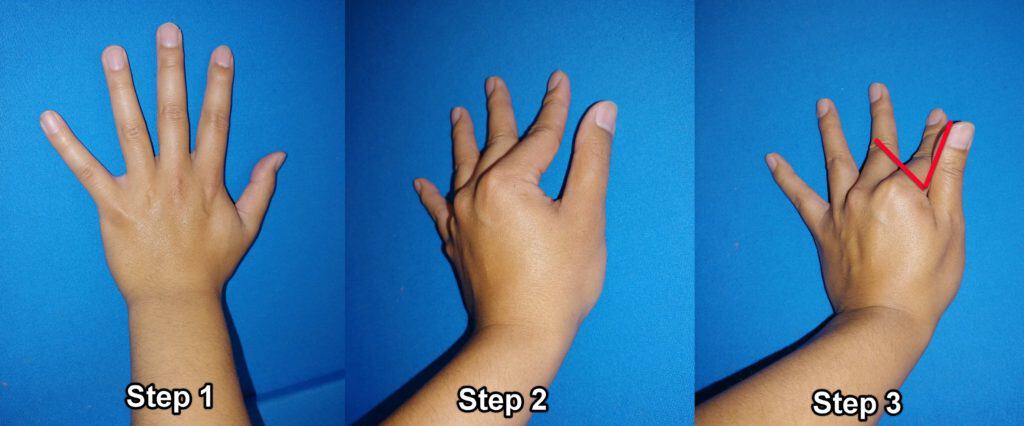
Wrong way to Bridge:

Bad Hand Bridge (The stick is resting between the thumb and knuckle in the fleshy moist part)
Open Bridge:
Benefits of an Open Bridge:
- You can see more of the ball
- Easier to form than the Closed Bridge

Closed Bridge:
Benefits of a Closed Bridge:
- Secure Pool Cue in place
- Less Likely to move around or side to side during shot

Remember a Closed Bridge is still forming the V shape with the Thumb and the Middle finger (instead of the index finger)
If you don’t master a proper bridge, it is going to be hard to improve past a certain level. Players using a bad bridge will have inconsistent hits. Having a reliable hand bridge is a fundamental player must get down.
Check out my full post on how to form a hand bridge here.
Stroke:
It’s hard not to mention the subject of Stroke because holding a pool stick correctly, how you grip and form your hand bridge is directly related to your Stroke.
Once you are holding the pool stick correctly with a stable hand bridge, you must work on your stroke. The Stroke a player has will have the most significant effect on a players skill. This is because it affects many things such as shot-making, applied English or Spin, and more.
In the opposite effect, a bad stroke can disrupt the natural swing of a good stroke and mess up a player shot. Hitting the ball too hard, missing, accidentally applying English/Spin to the ball when you did not intend to – are all side effects of a bad stroke.
I will go over the best pool stroke to have briefly, but in the future, I will write a full detailed post specifically about the pool stroke.
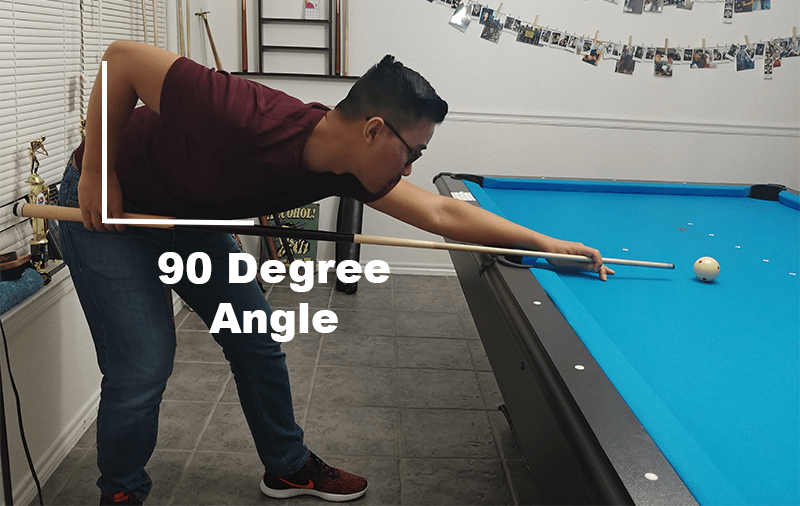
The ideal stroke that most beginners players want to have is called a Pendulum Stroke.
A Pendulum Stroke is when you do not move your upper arm during your stroke and only your forearm. Your elbow acts as a hinge and the player accelerates into the stroke gradually. The forearm and back arm should form a 90-degree angle.
The shoulder and upper chest should not be moving.
The result of a pendulum stroke is the tip of the cue should end close to the table. This is because your backhand position should naturally be going down.
Tip!
An important factor in this is FOLLOWING THROUGH with your shot. This is a difficult aspect for beginners to grasp because it is natural to want to slow down your down or decelerate when impacting an object.
The idea is that you are shooting through the ball. No jabs.
The stroke that you use will either limit or allow how far you can go in this game.
It is a huge core of your skill that you need to master in order to advance further. The perfect pool stroke is referred to as the pendulum stroke because you let your elbow behave as a hinge and your hanging forearm as a pendulum. Make sure your grip isn’t too tight and your practice strokes are steady and your cue tip is getting as close to the cue ball as possible.
Tip! You should only be moving your forearm and not your shoulder or chest.
Conclusion
Mastering how to hold a pool stick is one of the fundamentals that pool players must get down in order to improve.
Holding a pool stick correctly can be broken down into two main parts (The bridge and the grip), but there is more to it. The stroke and follow through are important pieces that work together like a well-oiled machine. Mess one up, and it can cause other issues to occur in other areas.
Practice the fundamentals of a bridge, grip, and stroke. It will take time to learn it correctly but you will get there. It may take players hours, days, weeks or even months to get this down. That is okay, you are trying to rewire how your body behaves. Once you’ve got it down – you will thank yourself. It will improve your shot making ability and overall game significantly.
Be sure to check out my other posts like pool products I recommend or other pool tips. Thanks for reading and let me know if you have any questions or comments!

